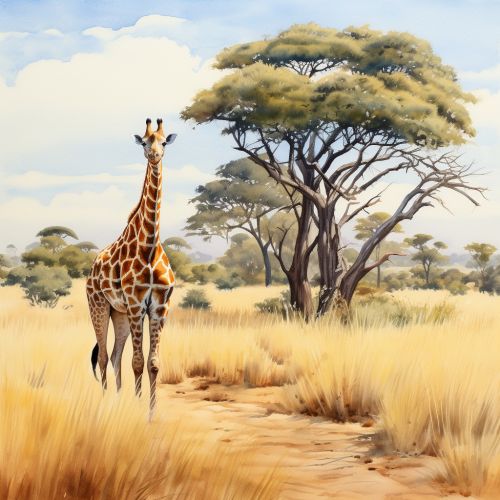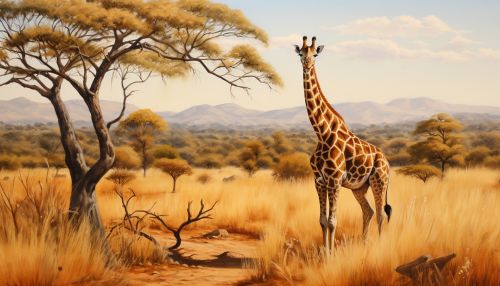Giraffe
Introduction
The giraffe (Giraffa) is a genus of African even-toed ungulate mammals, the tallest living terrestrial animals and the largest ruminants. The genus currently consists of one species, Giraffa camelopardalis, the type species. Seven other species are extinct, prehistoric species known from fossils.
Taxonomy and Evolution
The giraffe's scattered range extends from Chad in the north to South Africa in the south, and from Niger in the west to Somalia in the east. Giraffes usually inhabit savannahs and woodlands. Their food source is leaves, fruits and flowers of woody plants, primarily acacia species, which they browse at heights most other herbivores cannot reach.


Biology and Behaviour
Giraffes have a distinctive walking gait, moving both right legs forward, then both left. When galloping, the rear legs move around the front legs before the latter move forward. They have a high oxygen consumption due to their large size and active lifestyle. Their lungs can hold 12 gallons of air, and they breathe in and out about 150 times per hour.
Conservation
Giraffes are classified by the IUCN as vulnerable. Giraffe numbers have declined across Africa, which has led to the IUCN recognizing the giraffe as a single species that is vulnerable to extinction.
